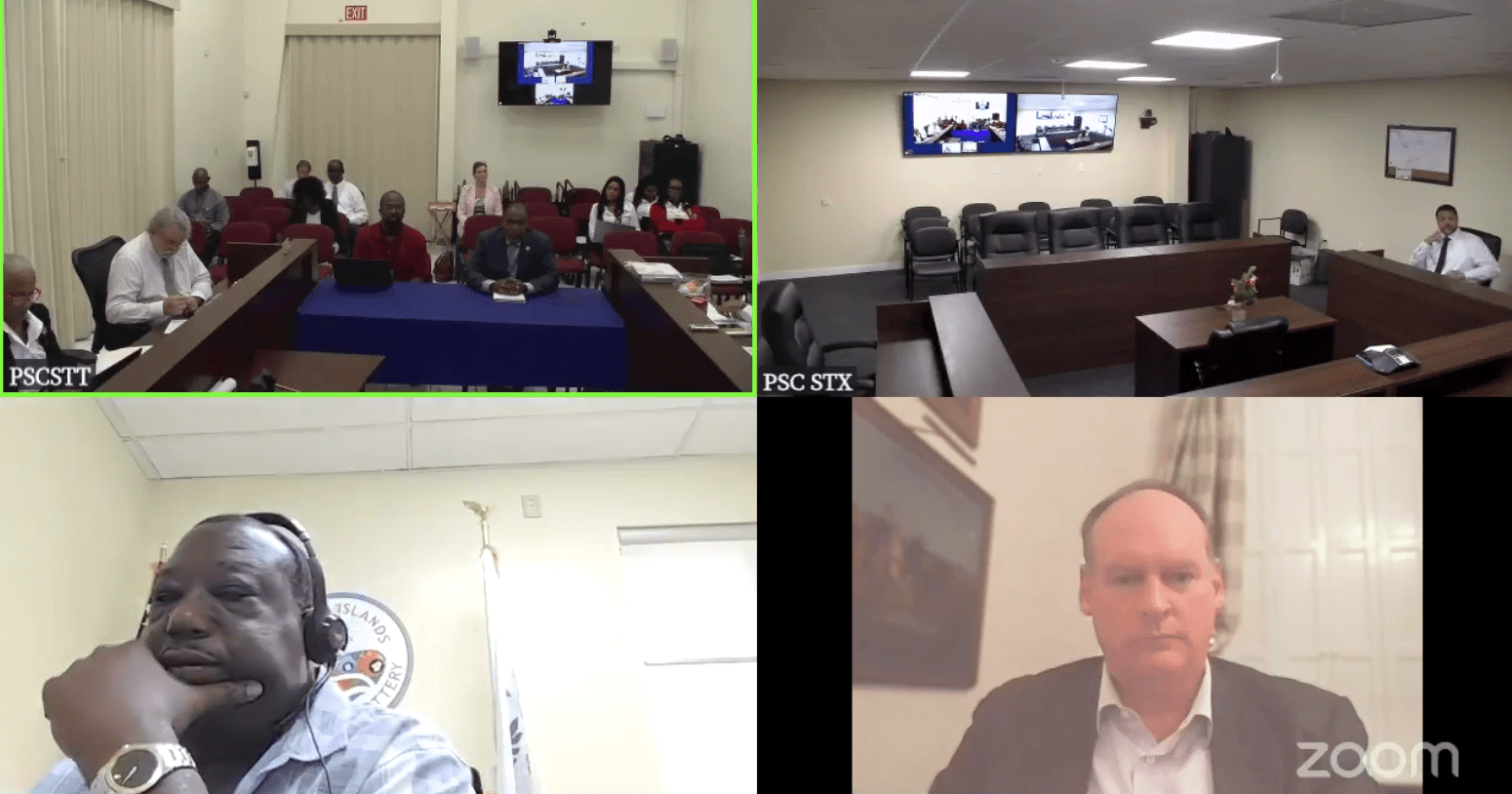
The V.I. Public Services Commission voted on Tuesday to keep the current Levelized Energy Adjustment Clause rate — or LEAC — at 22.22 cents per kilowatt-hour while mandating that the V.I. Water and Power Authority report monthly on the status and output of four new generators on St. Thomas and on the status of negotiations to secure a new liquid petroleum gas contract.
The decision came after V.I. Water and Power Authority Executive Director and CEO Karl Knight asked that the water and electric LEACs remain the same for the three-month period between Jan. 1 and March 31, 2025.
Following Knight’s request, Jim Madden of PSC advisory group Georgetown Consulting presented a staff report challenging several of the assumptions in the utility’s request, including that the request did not account for the utility’s use of its four Wartsila generators on St. Thomas.
“Based on information provided by WAPA, the four new units had been in testing mode and producing power for the period October through November 2024,” Madden said. “WAPA states in its petition that the four new units could be in operation on propane on January 2025.”
Even at 50 percent generation, Madden said, accounting for the new generators puts the cost at 20.56 cents per kilowatt-hour. Madden staff did not agree with WAPA’s recommendation that the LEAC remain at its current rate — despite lower projected fuel costs — to help the utility pay deferred energy costs and debts to vendors.
“The ratepayers have been denied potential savings for over a decade — that the management auditor had identified — and are entitled to some savings now that some additional efficiencies have been implemented,” he said. Madden went on to recommend a middle-ground solution, passing 40 percent of the savings on to consumers while leaving WAPA with 60 percent to cover its outstanding obligations — resulting in an electric LEAC rate of 21.56 cents per kilowatt-hour.
“It’s a very small decrease, but it’s a decrease indicating some change in the right direction,” he said.
Though enthusiastic about the Wartsilas coming online, Knight cautioned that an island-wide outage on Black Friday was caused when the Wartsilas failed a reliability test.
“We have since identified the issues, and hopefully we’ve resolved and rectified those,” he said. Knight added that while the generators have been producing energy during the testing phase, there were periods of time when they only ran on diesel and “large swaths” of time when the utility had to run additional units while the Wartsilas underwent testing.
“Meaning, we actually consumed more fuel during the performance testing than what would … otherwise have been our consumption,” he said. Knight added that the authority has struggled with acquiring fuel in recent months and called it “inappropriate” to assume that WAPA has realized any savings. Following Knight’s remarks, Commission Chair Pedro Williams asked when would be an appropriate time to begin considering reducing the rate.
“Honestly, I would say we’re at least a year away from being comfortable with suggesting that we can reduce rates and not incur … an immediate insolvency of the Water and Power Authority,” Knight said.
Asked to respond, Madden pointed to the enormity of the utility’s obligations.
“I mean how do all these very complicated issues get settled? The numbers are large, there is no plan — $100 million plus in payables, $160 million or so in deferred energy — $260 million has to be paid from somewhere, and … at the moment, there is no answer, there is no plan that’s been brought before the commission,” Madden said. “Staff’s recommending that some plan, a five-year plan, some kind of overall plan be put forward to say, how is this going to get resolved?”
Before moving to keep the current electric LEAC, Commission Vice Chair David Hughes indicated that he accepted findings that fuel costs will be lower when the Wartsilas are in use, leaving a difference of 4.8 cents per kilowatt-hour.
“I’m not anxious to change the rate. I am anxious to get going on the working capital equation for the authority — because I think it’s going to occur, so I see no reason to put it off,” he said, adding that the 4.8-cent differential is allocated against future fuel recovery discussions.














